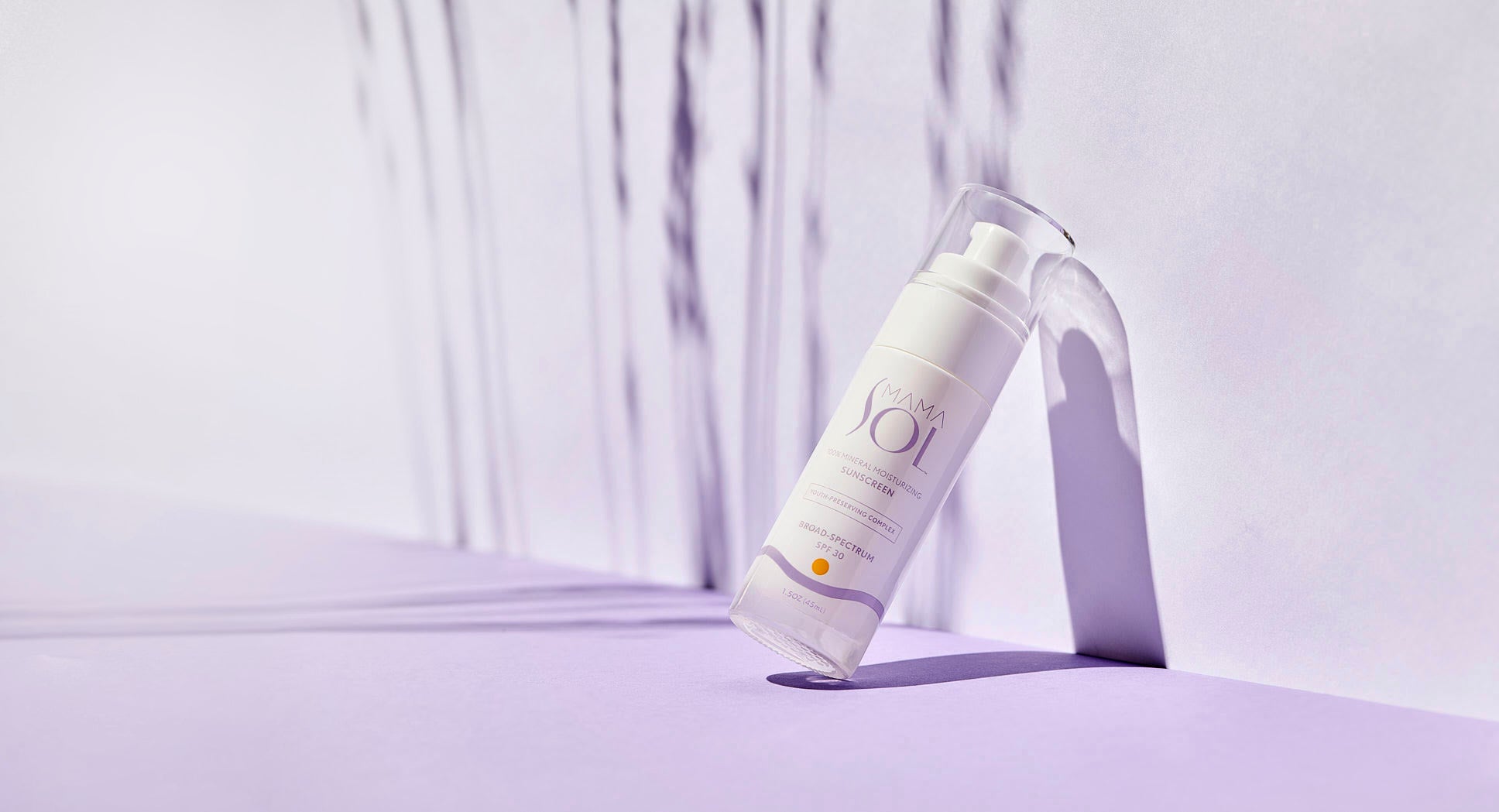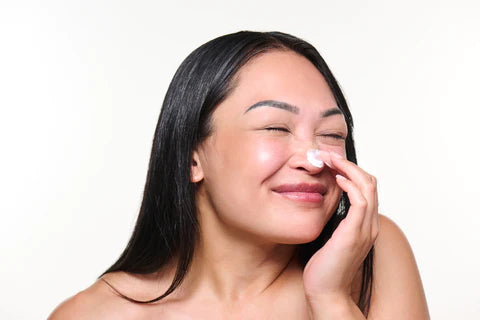
We get it—it can get totally confusing to navigate a world full of sunscreen acronyms (SPF, UV, IR, etc.), science jargon, and endless sun protection options. As we become more conscious about what we put on our skin and its impact on the environment, mineral sunscreen emerges as a standout choice. But what is mineral sunscreen, and how is it different from chemical sunscreens? Mama Sol’s guide to mineral sunscreen breaks down everything you need to know.
What is Mineral Sunscreen?
Mineral sunscreen, often called physical sunscreen, uses natural minerals such as zinc oxide and titanium dioxide as its main active ingredients. These minerals act as a physical barrier, sitting on your skin’s surface to reflect harmful ultraviolet (UV) rays and shield your skin from sun damage.
Benefits of Mineral Sunscreen:
- Sensitive Skin Friendly: Mineral sunscreens are less likely to cause skin irritation, making them ideal for sensitive skin types as well as children. They’re recommended for those with eczema, psoriasis, rosacea, and other skin conditions. Dermatologists love them for this reason.
- Broad Spectrum Protection: They offer protection against both UVA and UVB rays, guarding against sunburn and premature aging.
- Environmentally Friendly: Many mineral sunscreens are reef-safe because they use non-nano zinc oxide, posing less harm to the oceans, coral reefs, and marine ecosystems.
- Immediate Effectiveness: Unlike chemical sunscreens, which need time to be absorbed by your skin to be effective (usually around 20 minutes), mineral options begin protecting as soon as they're applied. They’re also considered more stable than chemical sunscreens, so fewer preservatives are needed.
Comparing Mineral and Chemical Sunscreens
Mineral sunscreen acts as a physical barrier that sits on your skin’s surface to block the sun’s UV rays. Chemical sunscreens are different from mineral sunscreens in that they absorb into your skin to then absorb UV rays, converting them into heat. They can also a good option when you’re spending a lot of time in the water or exercising/sweating quite a bit. Some chemical sunscreens might leave less of a noticeable finish, but they can also irritate sensitive skin and take about 20 minutes to become effective after application.
How to Choose the Right Mineral Sunscreen
When choosing a mineral sunscreen, consider:
- SPF Rating: Always choose SPF 30 or higher for adequate protection
- Skin Type: Look for formulas tailored to your skin, whether it's sensitive, oily, dry, or acne-prone
- Ocean-Safe Ingredients: Look for mineral sunscreen formulas made with non-nano zinc oxide or titanium dioxide. Avoid oxybenzone or octinoxate to help protect fragile reef environments.
Application Tips for Mineral Sunscreen
Before sun exposure, apply 1/3 to ¼ of a teaspoon of sunscreen to your face—we like to opt for 1/3 teaspoon (a dime-size amount) at least. To cover your entire body, a shotglass-size amount works for most adults. Don’t forget your ears, upper lip, legs, and the tops of your feet.
Mineral sunscreens often go on white so you can see exactly where you’ve applied it and not miss a single spot, but easily blend into skin with your fingers. Make sure to reapply every two hours, or more often if swimming or sweating.
Common Mineral Sunscreen Myths & Misconceptions
Contrary to popular belief, mineral sunscreens can be just as effective as chemical ones. The white cast associated with them has also been significantly reduced in newer formulations—all you have to do is warm it up with your fingertips and blend into skin.
The Future of Mineral Sunscreen

The newest formulas combine sun protection with skincare benefits without the white cast usually associated with mineral sunscreen. Keep an eye out for new hybrid formulas that combine the best of mineral sunscreen with skincare-boosting ingredients or makeup benefits like pore-smoothing.
Understanding what mineral sunscreen is, the benefits of mineral sunscreen formulas, and what options are available is key to ensuring you have the right amount of sun protection each day.
Can we remind you that you don’t need to look further than Mama Sol? We’ve got your multitasking 3-in-1 formula for 100% mineral sunscreen, hydrating moisturizer, and skin-smoothing makeup primer right here.



